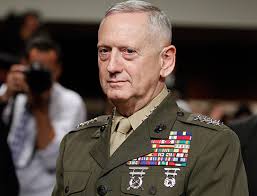UPDATED: U.S. defense chief Mattis arrives in Iraq, says country not after Iraqi oil

U.S. defense secretary James Mattis.

The United States has lead a 65-state military coalition fighting IS militants in Iraq and Syria since the group took over large parts of Iraq and Syria in 2014. It has provided military advice and ground backup for the Iraqi and Kurdish forces battling the extremist group out of Mosul, its biggest bastion in Iraq. The United States maintains nearly 5000 troopers in Iraq.
The U.S. military is not in Iraq “to seize anybody’s oil”, Mattis said, distancing himself from remarks by President Donald Trump before arriving on an unannounced visit to Baghdad on Monday.
“I think all of us here in this room, all of us in America have generally paid for our gas and oil all along and I’m sure that we will continue to do so in the future,” Mattis told a small group of reporters traveling with him as he discussed his objectives for the trip.
“We’re not in Iraq to seize anybody’s oil.”
“We should have kept the oil when we got out. And you know, it’s very interesting. Had we taken the oil, you wouldn’t have ISIS, because they fuel themselves with the oil. That’s where they got the money,” Trump told ABC in an interview in January, days after his inauguration as president. He was referring to the U.S. military pullout from Iraq in 2011.
Mattis said he aimed to get an up-to-date assessment of the war during his visit to Iraq. His strategy review could lead to additional deployment of U.S. forces, beyond the less than 6,000 American troops deployed to both Iraq and Syria today.
Experts say the Pentagon may also focus on other options, like increasing the number of attack helicopters and air strikes and bringing in more artillery. The military may also seek more authority to make battlefield decisions, allowing commanders to take advantage of opportunities more quickly.
